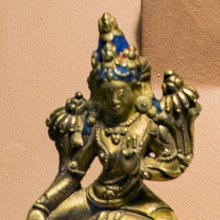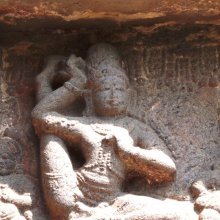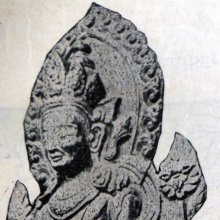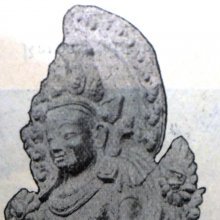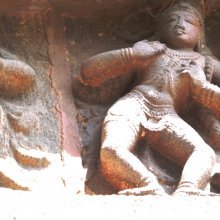Sitting posture: 2 definitions
Introduction:
Sitting posture means something in Buddhism, Pali, Hinduism, Sanskrit. If you want to know the exact meaning, history, etymology or English translation of this term then check out the descriptions on this page. Add your comment or reference to a book if you want to contribute to this summary article.
Images (photo gallery)
(+1 more images available)
In Hinduism
Natyashastra (theatrics and dramaturgy)
Source: Shodhganga: Elements of Art and Architecture in the Trtiyakhanda of the Visnudharmottarapurana (natya)Sitting postures (in Indian Dramas) are denoted by the Sanskrit term upaveśana, as conveyed through Āṅgikābhinaya: one of the four divisions of Abhinaya or “ways to convey or represent one’s emotion to others”, according to the Nāṭyaśāstra and the Viṣṇudharmottarapurāṇa, an ancient Sanskrit text which (being encyclopedic in nature) deals with a variety of cultural topics such as arts, architecture, music, grammar and astronomy.—The āṅgikābhinaya includes the histrionic representation of the limbs which is simply known as physical gestures. In the Viṣṇudharmottarapurāṇa, nine kinds of upaveśana i.e., sitting postures are accepted for Drama.

Natyashastra (नाट्यशास्त्र, nāṭyaśāstra) refers to both the ancient Indian tradition (shastra) of performing arts, (natya—theatrics, drama, dance, music), as well as the name of a Sanskrit work dealing with these subjects. It also teaches the rules for composing Dramatic plays (nataka), construction and performance of Theater, and Poetic works (kavya).
In Buddhism
General definition (in Buddhism)
Source: A Buddhist Library: In This Very LifeSitting postures are best for samatha or tranquillity meditation. In the tradition of Mahasi Sayadaw, vipassana practice is based on sitting and walking.
See also (Relevant definitions)
Partial matches: Sitting, Posture.
Full-text (+65): Asana, Pracalayita, Kukkutasana, Virasana, Svastha, Asanayoga, Baddhapadmasana, Siddhasana, Vaiyaghrya, Attemutte, Nesajjika, Samasamsthana, Vimukta, Siddhasan, Katuka, Svasthalasa, Vishkumbhita, Janugata, Muktajanu, Prayopaveshana.
Relevant text
Search found 84 books and stories containing Sitting posture; (plurals include: Sitting postures). You can also click to the full overview containing English textual excerpts. Below are direct links for the most relevant articles:
Manasara (English translation) (by Prasanna Kumar Acharya)
Chapter 56 - The Buddhist images (bauddha-lakṣaṇa)
Chapter 67 - The measures along the plumb lines (pralamba-lakṣaṇa)
Chapter 58 - The images of Yakṣas, Vidyādharas, and other mythical beings
Brahma Sutras (Nimbarka commentary) (by Roma Bose)
Brahma-Sūtra 4.1.7 < [Adhikaraṇa 5 - Sūtras 7-11]
Brahma-Sūtra 4.1.9 < [Adhikaraṇa 5 - Sūtras 7-11]
Brahma-Sūtra 4.1.8 < [Adhikaraṇa 5 - Sūtras 7-11]
Brahma Sutras (Shankaracharya) (by George Thibaut)
Vipassana Meditation Course (by Chanmyay Sayadaw)
Part 2 - Noting Objects < [Chapter 8 - Daily Activities]
Part 1 - Postures < [Chapter 8 - Daily Activities]
The Indian Buddhist Iconography (by Benoytosh Bhattachacharyya)
Practicing Insight on Your Own (by Acharn Thawee Baladhammo)
The Second Step < [Chapter 1]
The Method Of Adjusting The 5 Indriya Evenly < [Chapter 4]
Gauging The Results Of The Practice < [Chapter 6]
